A report from the state of Hawaii released late Wednesday night is providing interesting albeit very early insights from surveillance testing the state has been conducting. We’re anxious to see their further data assessment and a final report that’s due next. Here’s what we’ve learned so far.
The Safe Travels Hawaii COVID-19 Evaluation Testing Program has just completed its data collection phase. It found out of 20,253 tests conducted on visitor and resident arrivals there were 45 confirmed positive COVID-19 cases, or 2.2 per 1,000 people, as of November 24. This collection phase started on October 19, when the program began following the resumption of travel on October 15.
Next, the University of Hawaii’s John A. Burns School of Medicine will spend time further assessing the data, and then report to state leaders to help them make informed decisions about future plans for the Safe Travels pre-travel testing program.
“Our preliminary analysis of the data has left us with early takeaways, but we look forward to further evaluations.”
Lieutenant Governor Josh Green, the state’s official in charge of the pre-travel testing program, said, “We are very pleased with the surveillance study, and it has extreme merit in assessing the Safe Travels Hawaii pre-travel testing program.”
Preliminary report.
Dr. DeWolfe Miller, U.H epidemiologist provided findings regarding the Safe Travels pre-testing program which can be found on the Governor’s website.
The standout point.
“Very preliminary data analysis revealed a very strong risk for COVID-19 infection in returning residents relative to visitors.”
Additional preliminary findings were as follows:
- “Screening and pre-polymerase chain reaction (PCR) testing will greatly improve sensitivity of the PCR pre-travel test. For example: This screening prior to taking the PCR test, includes previous 14 days prior to PCR testing, have been free of any COVID-19 key symptoms (fever, etc.), have not taken fever-reducing medication, have not felt ill, no difficulty breathing, is not in quarantine, no new cough, no travel during the 14 days, have had no potential exposure to COVID-19 infected individuals, have not attended social gatherings, and has been wearing a mask at all times outside the home.”
- “COVID-19 case numbers are increasing on U.S. mainland departure locations. This may impact previous results.”
- “Surveillance results in phase one included both sampled participants and participants from Hawaiʻi County in which all persons were included. This has made it possible to include in the final report an assessment of case rates based on data from those who participated in the systematic sampling program.”
Green concluded, “The early results of this study show a small uptick in the number of travelers testing positive for COVID-19 upon receiving a second test after arrival. The researchers said, however, “Preliminary analysis suggests that the sampling program, which had a large no show, many have created an upward sampling bias in the program’s case rate estimates. This will be more thoroughly assessed in the final report.” So it sounds like had more people participated in the systematic sampling program, the number of cases might have been different.
“Conducting an antigen test upon arrival, with a subsequent confirmatory PCR test, as Hawaiʻi County has done, has proven to be helpful,” commented Green. “To the extent, mayors can follow a similar policy and operationalize post-testing, I recommend that course of action for extra assurance and an added layer of safety to the Safe Travels pre-travel testing program.”
“Plus, as the initial data indicates, strategic post-testing for returning residents could also prove beneficial in slowing the spread of COVID-19,” Green concluded.
Please share your thoughts on the early results. As you know, the state is still evaluating the Safe Travels pre-travel testing program and changes could be forthcoming at any time. Your comments matter.
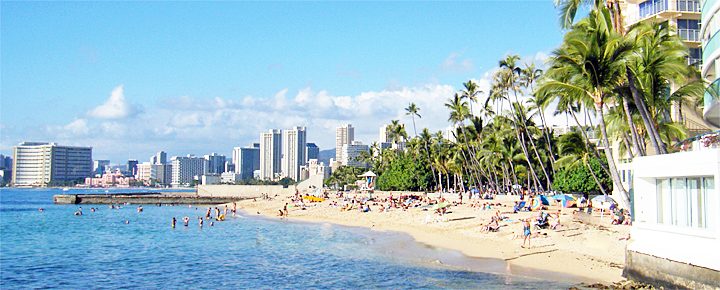
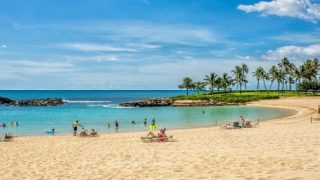

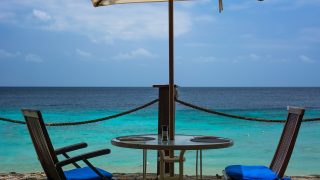
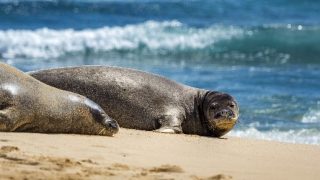
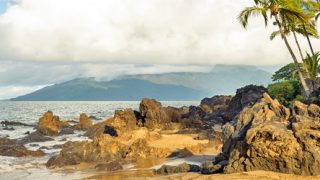
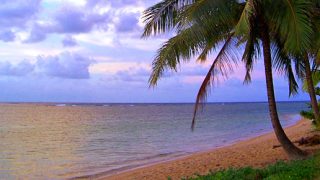
How do you turn off comments
I’m gathering from this information that Hawaii locals are not compliant on mainland then returning. Visiting friends and relatives unmasked?
We arrived at the start of November as a cohort in which every passenger was being tested at the airport. We received an email with the invitation to participate 3 days after. The message indicated that, “if possible… walk in to one of the convenient testing locations” the next day for the subsequent free test. On the Big Island there were two locations, one in Hilo and one by the Kaiser in Kailua Kona. Neither was convenient as we did not have a vehicle. Willing to participate, we replied to the email explaining our situation hoping for a reply. There was none.
A recommendation would be to provide the follow-up invitation at the time the test is administered and to include contact information. There may be a greater success for a substantiative study if locations and methods were more accessible. Mahalo.
I had the same problem on Kauai. We were randomly chosen to take a second test, and only had to go to the Wilcox hospital in Lihue. We were in Princeville, so we were unable to go. If they had a test location at the urgent care facility in Princeville it would have been possible for us to take the second test. Being home for three months now, I would have tested negative..
Same here. I was randomly selected but I was no where near Kailua-Kona or Hilo on the requested day. Good news is, I did have to have a negative Covid test to return to work after my vacation. The test did come back negative. Had I been tested again on the Big Island again, my test result would have been negative.
The focus on tourist vs resident with regards to Safe Travels doesn’t matter and needs to stop. The language used needs to be Traveler. People choosing to fly right now are the ones bringing the virus to Hawaii which is resulting in a lot of travel related cases the resulting community spread.
Kauai’s cases in the 5 last five weeks have double because the one test safe travels program. And yet dissipate LT Governor Green admitting the program has it flaws and that a second test is the safest way forward in the safe travels program; Kauai has been rebuffed twice by the state when trying to implement two test state travels program with a quarantine.
Knowing a person asked who was asked to participate in the state’s post travels surveillance program, and while it they choose to do it because it was right thing and best to help the state get data, it was a time consuming endeavor and I’m as a result not surprised they got a lot of no shows to the request for participation. Truly not shocked that is study did get the level of data they really needed.
As it stands safe travels needs to be improved because it’s currently the “safe” Travels program. And by that it’s a fake sense of security because at that single moment in time, you were negative but there a million and one ways to get infected between your rest and when you start mingling. The new rule implemented 11/24 is a start try and help improve but if they really want it to be a safe travels program It must have a pre and post travel test as well as a quarantine in between!
Yeah, that’s not going to happen, Sarah, the tourism industry in Hawaii is already on life support, and forcing tourists to quarantine for half of their (on average) 7 day vacation, is frankly asinine, and will result in billions of lost revenue (by the majority going elsewhere). It would also assure the 10’s of thousands of industry workers still sitting at home don’t go back to work. It’s not a good business model.
“A million and one ways to get infected” in the 3 days before travel??? Ummm, that’s an obnoxious overstatement, and not factually true at all. Most people are going to be responsible and make sure their very Expensive Vacation is not upended by contracting Covid if their test results are negative, by limiting what they do before they get on the plane.
Clearly the residents aren’t as attentive, at this point, as they are bringing it back more than tourists. I’m not surprised that it’s the residents traveling that has a greater impact, as they aren’t as heavily invested in the expense of traveling here, which is a LOT more costly than traveling stateside, and that this is an issue, speaks volumes.
In no way should they combine tourists and residents into one bucket of “travelers”. Resident’s don’t contribute to the tourism industry, and it clearly would impact the data by doing so. The government should definitely separate so they know exactly how the tourism industry is impacted, and the data is not diluted because of traveling residents.
Excellent info, Rob and Jeff, very enlightening! Mahalo.
Hi Jim.
Thanks. We appreciate your perspective. Good to hear from you,and Happy Thanksgiving.
Aloha.
“Most people are going to be responsible”
If that were true, the US wouldn’t have the numbers of cases, hospitalizations and deaths that we are seeing.
Agree, Jim. Prior to us traveling to the BI, my husband and I were not out and about. We don’t socialize outside of our household and in my office, everyone is working remotely. Wear a mask all the time where we can’t be 6 feet apart. Eat at restaurants where we feel they are doing things right. After all, if there is an outbreak at their business, it is the business’ reputation at risk. Most people are doing the right thing, yet because of the 5% that don’t, restrictions are imposed.
The numbers make sense, because if you’re a tourist that tested positive before travel, knowing that you’re going to be put into a 14 day quarantine at your expense, it would be highly unlikely that you’d get on a plane to Hawaii.
A resident on the other hand testing positive is a different story they’re going home, so the 14 day quarantine isn’t as big a deal.
Data that should easily and also be analyzed : Regarding positive/ negative tests
What percent were tourists, and did more come from certain countries/ states
What age % / range visitors and residents, and how did they get it
What # of travelers unable to get a verifiable test result within 3 days of travel
What #/% quarantined
What hotel choices if quarantined?
Can you quarantine in a condo you own, like a returning resident?
If anyone is following these beat of Hawaii articles and comments as closely as I am, just wanted to update my Vault health experience. Before testing they didn’t respond to any of my emails or calls. So that was distressing. Testing was smooth, zoom call easy, UPS was easy… The waiting was excruciating. Took test on Monday, dropped off at UPS at 1pm(EST). My kit was delivered at 3pm, results uploaded at 11pm. My son’s kit got delivered at 7pm… And we JUST got them uploaded at 5:44(PST) on Thanksgiving day. Yes, we are currently in California… Flying in last night from Ohio and praying results would be loaded before we left this morning at 9:30am. I did send them an email last night with STAT HAWAII and my son’s name in the subject line and they did respond this morning asking for more information to help expedite, so that was comforting. Funny thing is, his results came through at 5:44 and the email was sent at 5:45 lol. Not sure if it was related, but could be useful! Good luck!
I too used vault this week and travel tomorrow.
I was stressed due to a previous article published on Tuesday saying not to use Vault.
Sent the test Tuesday and got results Wednesday evening. It was very efficient.
For those of you stressed out…don’t be so unnecessarily. It will work out fine 🙂
Thank you for this information. My husband and I are scheduled to fly on December 5 and it has been very stressful worrying if we will get our test results back in time. Unfortunately, we can’t take the Vault test until 4:45 pm because of the time of departure of the second leg of the trip. Not sure if this means the test won’t actually even be shipped out by UPS until the next day.
You’re ” currently in California”?
California, where the infection rate is currently sky high?
Great. That’s a situation that is ripe for contracting COVID-19 in a literal heartbeat.
Mahalo guys for putting this out there. I hope your Thanksgiving was restful and blessed.
Aloha to all. Stay safe.
Hi Pam.
Thanks. Best regards.
Aloha.
“California, where the infection rate is currently sky high?”
Actually, by number of cases per million population California ranks 41 out of 50 – that is, there are 40 states with worse infection rates. So no, the rate in CA is not “sky high.” Biased?
The tourists have been comtemplating the requirements and planning the trip to Hawaii so that they don’t have to quarantine in a hotel and ruin their vacation. They are being diliigent in following the rules.
The returning residents are more likely to return without testing. They are going back home to where they live and if they are not tested and have to quarantine the impact on their return is less. First of all they don’t have to pay for a hotel; they have a home that is already paid for vie rent, mortgage or ownership. Second if they live with others that didn’t travel they don’t have to pay for restaurant and delivered food for 2 week; they have others in the house or possibly even neighbors that can shop for food for them.
The returning residents have not been tested have additional opportunities for spreading the virus. First of all if they are returning to a home that has others that didn’t travel they could infect those people who then go out into the public. Second since they are living in a home rather than an hotel they don’t have the hotel staff to evade in violating the quarantine.
Thank you Beat of Hawaii for your forum.I agree with Kenneth,it makes sense. As a Kauai resident I think Kauai should be at Tier 3,I don’t think this is a big sacrifice,although it may be an unpopular opinion. Moving to Tier 3 will help Kauai to mitigate covid.
Hi Jeanne.
Thank you for your interesting comment. That would limit gatherings, which based on the governor’s post last night, could be beneficial.
Aloha.